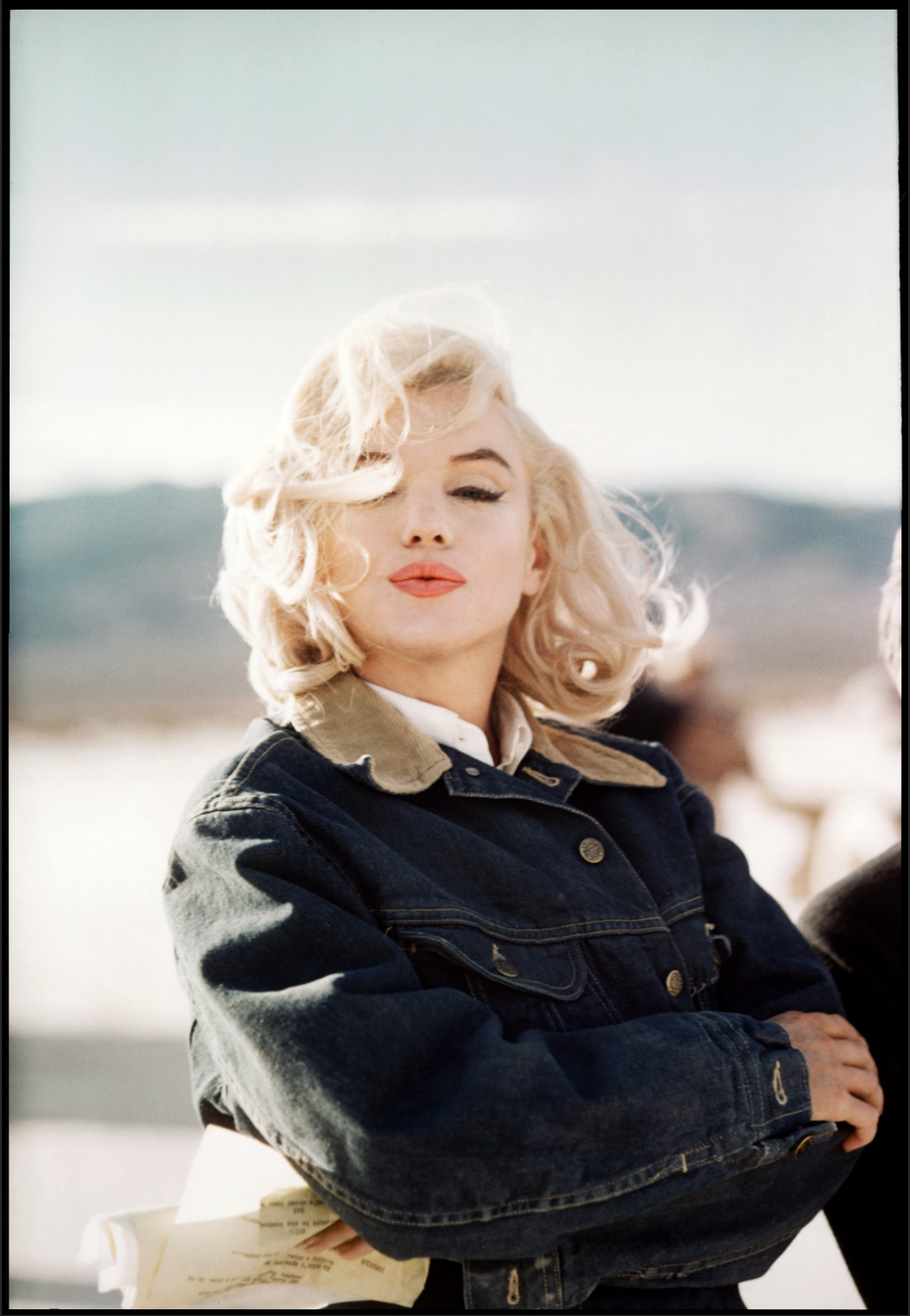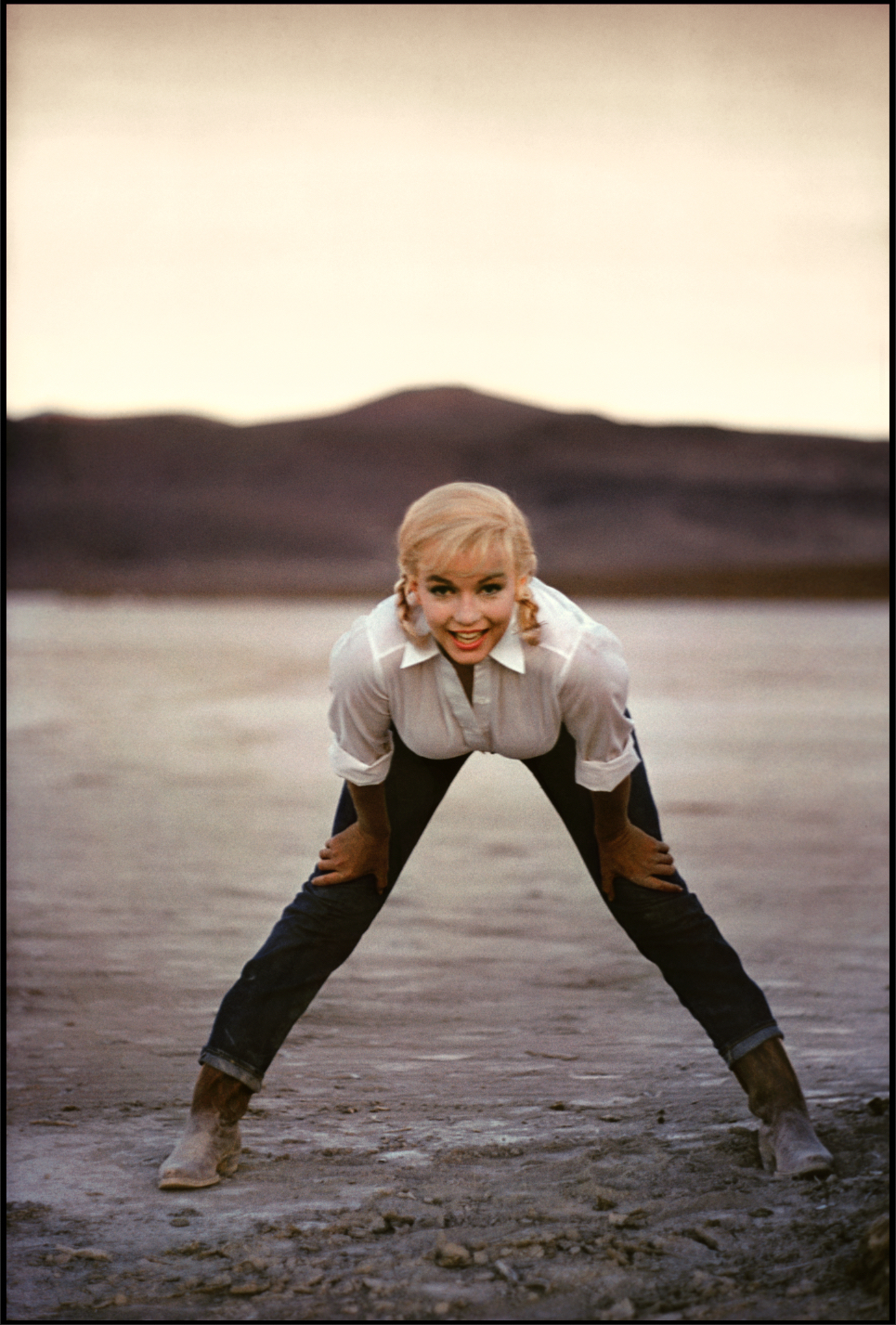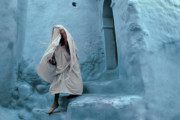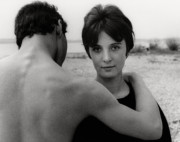Eve Arnold’s Images of Marilyn Monroe
To celebrate an archival print sale led by the Eve Arnold Estate, curator Maya Binkin shares the story of Arnold and Monroe’s close relationship.
All three images in this article are now available to purchase in an archival print sale launched to support the work of digitizing and making available Eve Arnold’s vast archive of 250,000 images. Three archival 10×12 prints of Monroe on the set of “The Misfits” (in editions of 250) are available for a limited time only. Each print, made in Italy by Arnold’s bespoke master printer, Danny Pope, is editioned, captioned and stamped by hand on the reverse, in keeping with her tradition.
Find out more here.
The following story is written by Maya Binkin, curator of the recent major retrospective, “To Know About Women: The Photography of Eve Arnold.”
In 1976, Eve Arnold sat on her veranda in Cuernavaca, Mexico, and, as legend has it, wrote her first book, The Unretouched Woman (New York 1976), in one sitting. She was already in her sixties and one of the foremost photojournalists of her time. She had a clear subject in her mind. “This is a book about how it feels to be a woman, seen through the eyes and the camera of one woman — images unretouched, for the most part unposed, and unembellished.” Arnold spent much of her long career with women from all walks of life, from celebrities to peasants, from queens to prostitutes. Her generation of photographers practiced ‘slow journalism’ where the photographer spent time getting to know their subjects, sometimes years so that the resulting portrait was more akin to a collaboration and was as close as possible to the truth.
Arnold was good friends with Marilyn Monroe by the time these three images were taken in the Nevada Desert in 1960 during the shoot for The Misfits. They had known each other for over ten years and Marilyn had come to rely on Arnold not only as a photographer but also as a trusted confidante. When they first met, they were both at the start of their careers and they grew together in fame and reputation. Monroe liked Arnold’s approach to portraiture. She had seen Arnold’s photographs of Marlena Dietrich where Arnold photographed her as a charismatic woman who worked hard to achieve her success, and not as a static living mannequin that was the fashion at the time.
Arnold accompanied Monroe on numerous working trips and promotional events, amassing an impressive portfolio of images of the actress. As demand for photographs of Monroe was high, and compromising images lucrative, Arnold had many occasions to betray Monroe’s’ trust for personal gain. However, the trust celebrities imparted on Arnold was her greatest currency and she not once abused her position. She was famous for her strong and just character.
Arnold much enjoyed photographing Monroe, who seemed to know how to command the camera and pose perfectly for a photograph. Arnold was surprised how she could angle herself to appear thinner and taller in photographs than she was. Arnold was one of a team of photographers asked to Nevada to document the filming of The Misfits, photographs which would later be used to promote the movie. Arnold was very familiar with these types of shoots but quickly realized on arrival that she was not documenting a movie set but the breakdown of Marilyn’s marriage.
Monroe’s husband, Arthur Miller, wrote The Misfits so that she would have an opportunity to reposition herself as a ‘serious actress’. Already in a fragile mental state following several failed pregnancies and an increased reliance on prescription drugs and alcohol, Monroe found the strain of being pitched against veteran actors too much to bear and often arrived late on set and forgot her lines.
She also disliked the script declaring: “Arthur said it’s his movie. I don’t think he even wants me in it. It’s all over. We have to stay with each other because it would be bad for the film if we split up now.”
Monroe’s vulnerability is ever-present in the legendary images Arnold took on the set. No one was to know that the film would be Monroe’s last motion picture. After the filming was finished Monroe and Miller divorced and six months later, she died from a drug overdose. Heartbroken, Miller opted to not attend her funeral noting,
“She won’t be there.” As fate would have it, it was also the last film of Clarke Gable whom Marilyn so terribly admired. Gable, who was 59 years old, suffered a heart attack and died shortly after the filming.
Arnold was terribly upset to learn that her friend had died. “My most poignant memory of Marilyn is of how distressed, troubled and still radiant she looked when I arrived in Nevada,” Arnold recalled in her memoirs. “It occurred to me then that when she had lived with the fantasy of Marilyn that she had created, that fantasy had sustained her, but now the reality had caught up with her and she found it too much to bear.”
These three prints that have now been made available from the Eve Arnold Estate have been printed by Danny Pope, who is a world-renowned specialist printer. Pope worked closely with Eve Arnold to produce her prints and, though many of the processes and technologies that they used are no longer available, Pope has crafted and refined a technique of printing digital files that successfully captures the analog quality that was so important to Arnold, especially following the digital revolution. Described as a poet-printer, Pope experienced all the lessons of failure alongside Arnold and therefore knows what success looks like when printing her work.
View the archival print sale, live until December 13, here.













